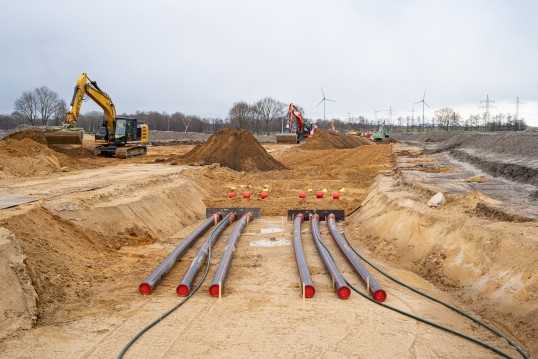- Artificial Intelligence (AI)
- Occupational exposure limit values
- Climate Change and Occupational Safety
- List of CMR substances
- Electromagnetic fields
- Ergonomics
- Industrial Security
- Collaborative robots
- Noise
- Nanoparticles at the workplace
- Optical Radiation
- REACH
- Reference materials
- Proficiency testing
- Vibration
- Virtual reality
- Work 4.0
Upgrading and expansion of electricity grids

Source: Countrypixel - stock.adobe.com
Germany plans to almost double the proportion of the country’s gross electricity consumption met by renewable energies, from just over 46% in 2022 to at least 80% by 2030. This is to be achieved by erection on a large scale of onshore and offshore wind turbines and photovoltaic (PV) systems [1].
The expansion of renewable energy sources and the decommissioning of nuclear and coal-fired power plants is changing the locations at which electricity is produced and increasing the volatility of electric power generation. For the energy transition to be completed successfully, the electricity grids must therefore be upgraded and expanded.
Electricity is generated from wind power by onshore and offshore wind turbines, primarily in north-western and north-eastern parts of Germany and in the North Sea. It must be transmitted from these locations to the centres of consumption in western and southern parts of the country. To enable increasing quantities of electricity generated from wind energy to be fed into the grid (transmission network) and transported by it and for grid bottlenecks to be avoided, the grid requires new high-voltage transmission lines [2]. 119 grid expansion projects for which legislation has been enacted are currently in progress in Germany, with a total length of almost 14,000 km [3].
The growth in PV systems is resulting in more and more electricity being generated locally. Local electricity consumption is also set to increase as a result of the switch to electromobility. This rising decentralization, together with the higher volatility of electric power generation from renewable energy sources (RESs), requires changes to the distribution grids.